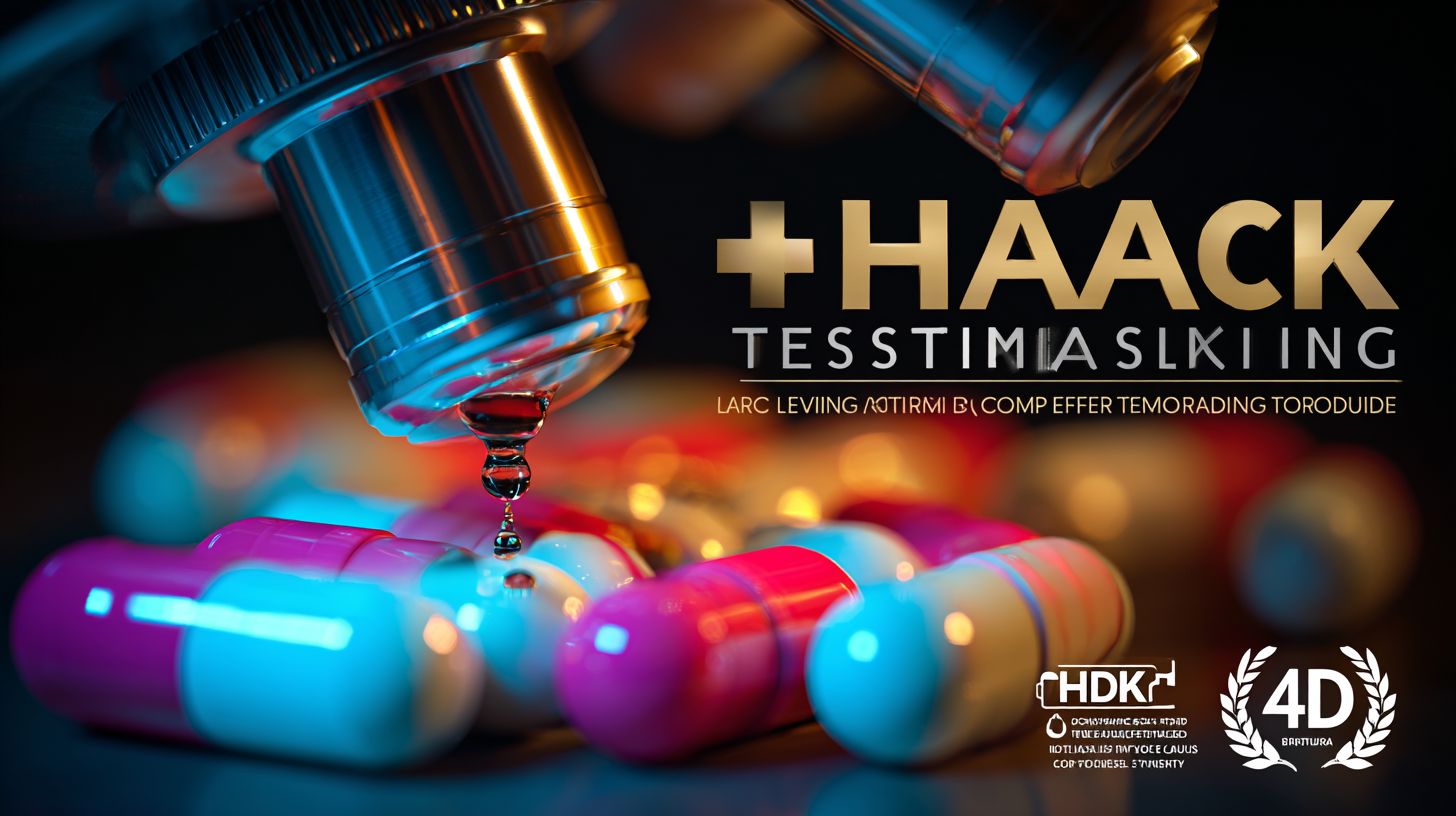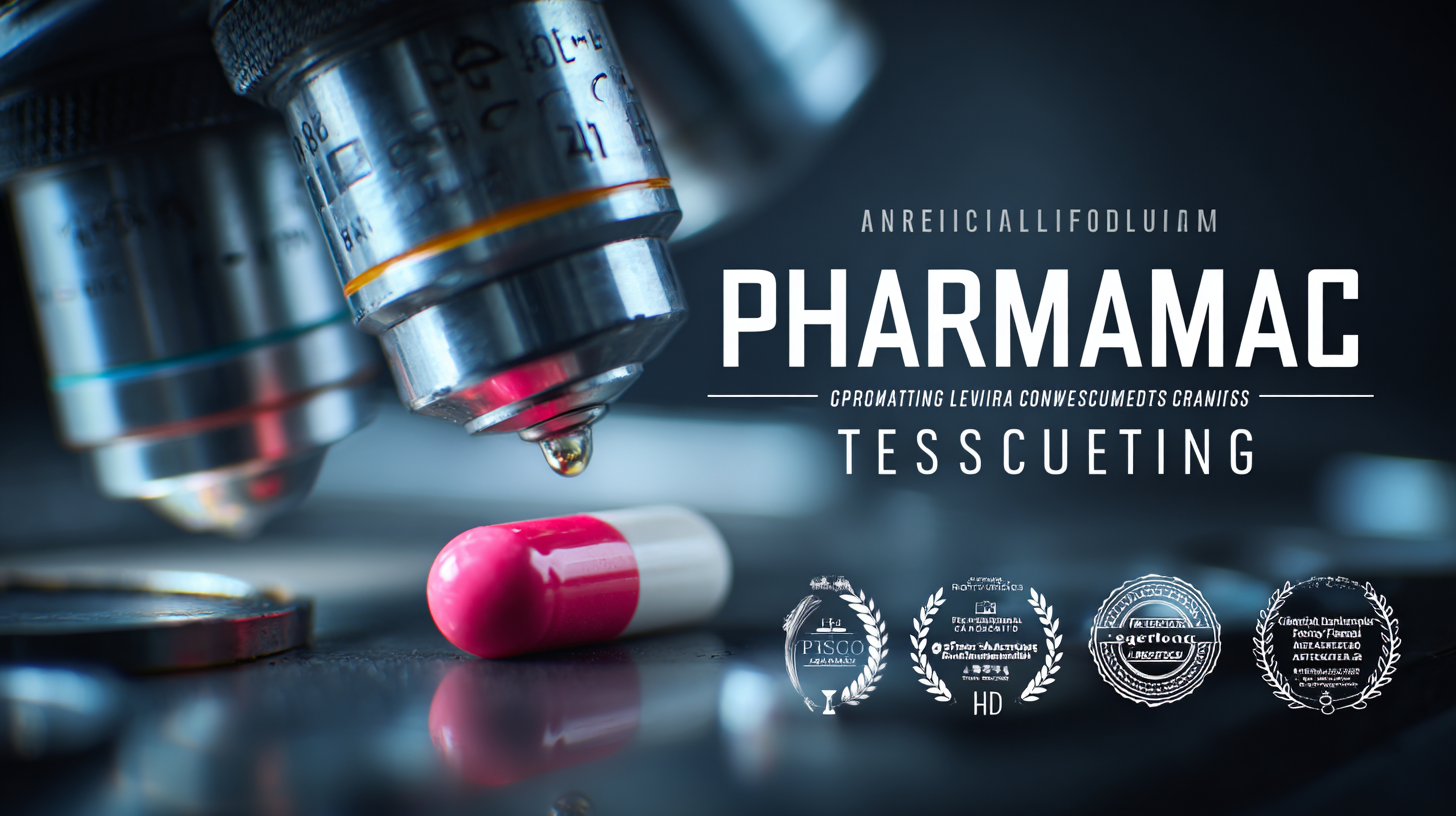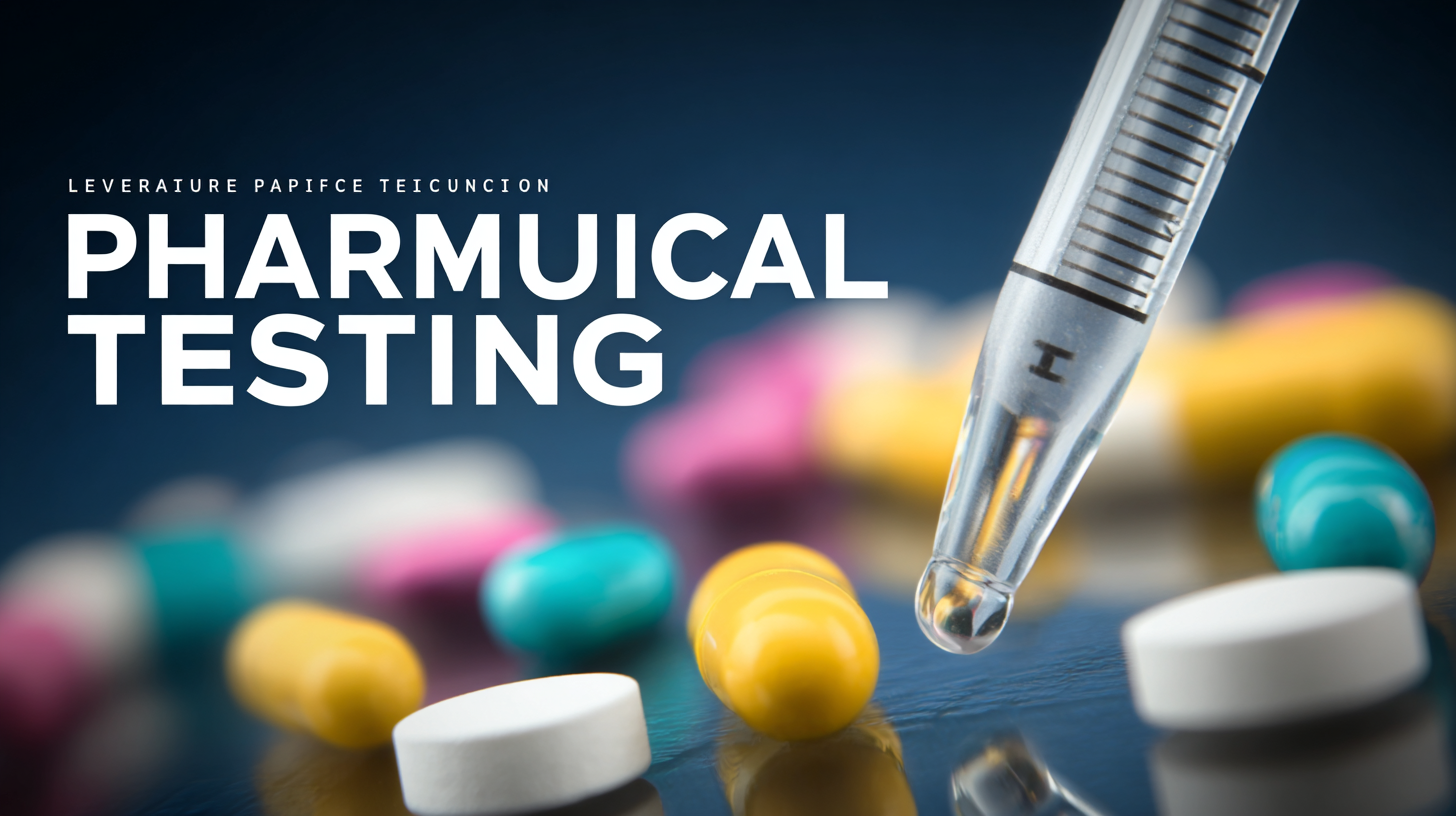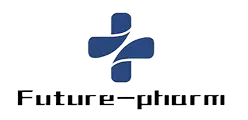
Evaluating Leading Pharmaceutical Testing Providers: A Comprehensive Comparison Guide
As the pharmaceutical industry continues to evolve rapidly, driven by advancements in technology and regulatory changes, the importance of efficient and reliable Pharmaceutical Testing has never been greater. According to a recent report by Grand View Research, the global pharmaceutical testing market is expected to reach approximately $70 billion by 2025, reflecting a significant compound annual growth rate (CAGR) of about 7.6%. This growth is fueled by the increasing demand for drug safety and efficacy, stringent regulatory requirements, and the rising focus on personalized medicine.

In this comprehensive comparison guide, we will evaluate the leading pharmaceutical testing providers, highlighting their strengths, weaknesses, and unique offerings. By examining these key players and industry trends, stakeholders can make informed decisions that align with emerging needs and challenges in the pharmaceutical landscape.
Industry Standards in Pharmaceutical Testing: Understanding Key Regulations
In today's pharmaceutical landscape, adhering to stringent industry standards is essential for ensuring the quality, safety, and efficacy of products. Regulatory frameworks, such as the Food Safety Modernization Act (FSMA) and guidance from the International Council on Harmonisation (ICH), play a pivotal role in shaping the way pharmaceuticals are tested and validated. For instance, the FSMA aims to reduce the incidence of foodborne diseases that affect millions, thereby emphasizing the need for regulatory oversight in pharmaceuticals linked to food safety. As companies strive to meet these heightened standards, understanding the underlying regulations becomes crucial for compliance and product success.
Moreover, advancements in technology, such as the V3+ framework, reflect the shift towards user-centric and scalable solutions in pharmaceutical testing. The integration of usability validation is set to enhance the assessment processes for sensor-based technologies, ensuring that they meet regulatory requirements while addressing real-world usability. As the industry evolves, the role of regulatory science becomes increasingly significant—not only in evaluating new drugs but also in guiding the implementation of innovative methodologies that minimize reliance on traditional testing models, paving the way for more humane and sustainable practices in pharmaceutical testing.
Evaluating Leading Pharmaceutical Testing Providers: A Comprehensive Comparison Guide
| Provider Type | Testing Services Offered | Regulatory Compliance | Average Turnaround Time | Client Satisfaction Rating |
|---|---|---|---|---|
| Contract Research Organization (CRO) | Clinical Trials, Bioanalytical, Toxicology | FDA, EMA, ICH Guidelines | 4-6 weeks | 90% |
| Analytical Testing Laboratory | Stability Studies, Assay Development | ISO 17025, GMP | 3-5 weeks | 85% |
| Quality Control Laboratory | Quality Assurance, Batch Releases | FDA, ICH | 2-4 weeks | 92% |
| Microbiology Testing Services | Microbial Limit Tests, Sterility Testing | USP, EU Guidelines | 1-3 weeks | 88% |
| Regulatory Affairs Consulting | Submission Support, Labeling Compliance | FDA, EMA Regulations | Varies | 91% |
Comparative Analysis of Leading Testing Providers: Metrics and Methodologies
In the rapidly evolving pharmaceutical landscape, selecting the right testing provider is crucial for ensuring product safety and efficacy. A comprehensive comparison guide that focuses on key metrics and methodologies can significantly aid stakeholders in making informed decisions. The comparative analysis should include several dimensions, such as the provider's accreditation, technological capabilities, and adherence to regulatory standards. These factors can provide insights into the reliability and credibility of testing outcomes.
Moreover, metrics such as turnaround time, cost-effectiveness, and customer support are essential in evaluating potential providers. A robust methodology for assessing these variables can involve quantitative scoring systems or qualitative assessments based on real-world case studies. Understanding the nuances of each provider’s methodologies—ranging from traditional lab tests to advanced in silico models—will enable organizations to align their specific needs with the most suitable testing partner, facilitating smoother compliance and innovative product development.

Assessing the Impact of Compliance on Testing Outcomes and Quality
In the pharmaceutical testing landscape, compliance significantly influences testing outcomes and quality. According to a report by the FDA, approximately 70% of drug recalls in recent years have been linked to inadequate testing protocols and non-compliance with regulatory standards. This highlights the critical role that adherence to Good Laboratory Practice (GLP) and Good Manufacturing Practice (GMP) plays in ensuring the reliability of test results and the safety of pharmaceutical products. Compliance not only mitigates risks but also enhances the credibility and marketability of pharmaceutical companies.
Furthermore, findings from industry analyses, such as those from the Global Pharmaceutical Testing Market report, indicate that organizations with a robust compliance framework tend to achieve a 25% faster approval rate for new drugs. This is essential in today's fast-paced pharmaceutical environment where time-to-market is a key competitive advantage. Emphasizing compliance leads to improved accuracy in test outcomes, reducing the likelihood of costly errors and fostering trust with regulatory bodies. As the pharmaceutical industry continues to evolve, prioritizing compliance will remain paramount in shaping quality assurance and testing efficacy.
Innovations in Pharmaceutical Testing: How Providers Stay Ahead
In the ever-evolving landscape of pharmaceutical testing, providers must continually innovate to meet the stringent demands of regulatory bodies and the growing complexity of drug development. Recent advancements have seen providers integrating advanced technologies such as
artificial intelligence
and machine learning into their testing protocols. These tools enhance predictive analytics, streamline data processing, and ultimately lead to faster and more accurate results. By harnessing these innovations, pharmaceutical testing providers not only keep pace with industry changes but also improve their overall efficiency and reliability.
Moreover, the emphasis on personalized medicine has driven many providers to develop more specialized testing methods tailored to individual patient profiles. This shift necessitates a deeper understanding of biostatistics and genetic profiling, allowing for more targeted therapies that can significantly improve patient outcomes. Additionally, the incorporation of
real-time data monitoring and reporting systems empowers providers to respond promptly to emerging trends and adverse reactions, further solidifying their role as essential partners in the drug development process. As providers continue to adapt and innovate, they remain at the forefront of ensuring the safety and efficacy of new pharmaceuticals, ultimately benefiting patients and the healthcare system as a whole.
Challenges in Meeting Industry Standards: Insights from Top Testing Companies
The pharmaceutical testing industry is facing increasing challenges as regulatory standards become more stringent. According to a report from the Pharmaceutical Research and Manufacturers of America (PhRMA), 80% of companies cite compliance with evolving regulations as a major hurdle in their testing processes. This complexity is compounded by the rapid pace of technological advancements, which continues to reshape testing methodologies and requirements.

Leading testing providers are responding to these challenges through innovation and adaptability. For instance, a recent survey by Grand View Research revealed that 65% of pharmaceutical companies are investing heavily in automation and AI-driven technologies to enhance compliance and efficiency. By leveraging these tools, top testing companies not only streamline their operations but also reduce the risk of human error, ensuring that their services align with the latest industry standards. This proactive approach is crucial in maintaining the integrity of testing results and upholding the trust of regulatory bodies.
